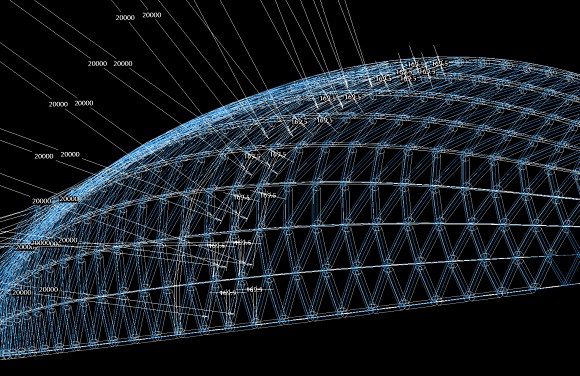MyTime Interview – Kas Oosterhuis on Process, Timelessness and RealTime in Architecture
Architecture theory and practice has changed dramatically with the use of computers. A lot has changed or has been adapted, but for many a radical new orientation lies still ahead. There are some fundamental shifts in the way a process oriented thinking of architecture manages the different steps from analysis to design to construction and beyond. The way it can integrate and mange thousands of parameters using algorithms and using it to dynamically model the progress is challenging a profession still largely clinging on to a modernist objectivity and distance.
Kas Oosterhuis is appointed professor digital design methods at the Delft Technical University and leads Hyperbody, the knowledge center for Nonstandard and Interactive Architecture at the TU Delft. His recent book ‘Towards a New Kind of Building is published by NAi Publishers (2011) and was discussed earlier on urbanTick.
With this interview we want to focus on the wider context of a new kind of building and specifically on some of the time constraints in architecture as a whole but towards a new building as such. Time is playing a more prominent role in architecture as as proposed by Kas Oosterhuis, both factual and secondary as an element of the process of designing, building and running projects and buildings.
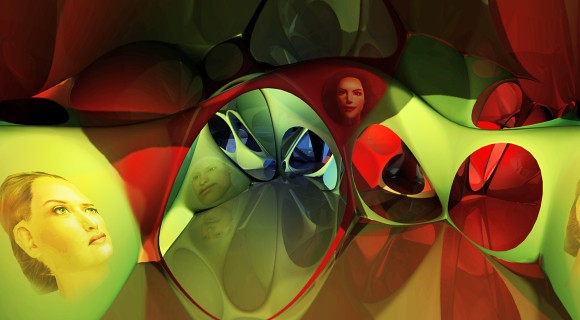
Image by ONL / Digital Pavilion Seoul by ONL 2007. Design team: Kas Oosterhuis, Ilona Lénárd, Chris Kievid, Christian Friedrich, Marthijn Pool, Gijs Joosen, Dieter Vandoren, assisted by Petr Vokal, Jan Gasparik, Matthijs Frederiks, Tade Godbergsen, Tim McGinley, Wouter Slot. Pavilion for digital media in media complex.
—
urbanTick: Is it important to be on time?
Kas Oosterhuis: I would rather say that it important to be actual, that is exploring and eventually incorporating actual technologies in the theory and practice of architecture and building
urbanTick: Would you then also say this incorporation results in actual buildings, buildings, beyond the technology, that are on time?
Kas Oosterhuis: Just there, just then, just that, just thus
urbanTick: With the technological focus of the current western society time is often said to run faster than in the past. Does this also apply to architecture?
Kas Oosterhuis: More things happen simultaneously, we are living in a world that fosters multiplicity, we are living inside evolution and we feel it stronger since there are more thing evolving at the same time then ever
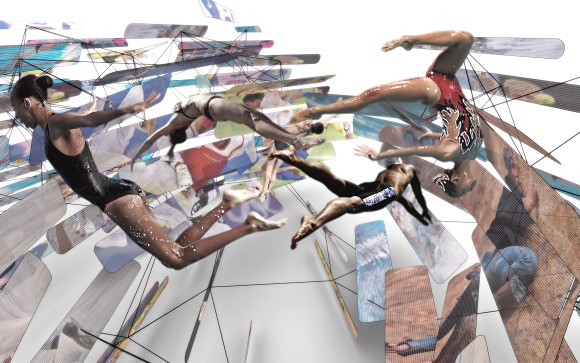
Image by ONL / AOM Launchpad by ONL 2011 – Design team: Kas Oosterhuis, Ilona Lénárd, Gijs Joosen, Ilaria Giardiello, Lieneke van Hoek, Miro Strigác. A family entering and navigating the Launchpad sorts out a much bigger effect on the whole installation. The members of the family browse some shared and individual preferences, causing the AOM Launchpad to crystallize into higher definition zones in all directions they are looking to. The family thus creates a semi- enclosed space, open to other visitors navigating the pad. One single AOM Launchpad may host more then one family.
urbanTick: You are often integrating the term ‘Real Time’ in your texts for TaNKoB. How do you interpret the meaning of ‘Real Time’ for your work?
Kas Oosterhuis: Real time is introduced in my work since 1999 since I designed the Trans-Ports project, the pavilion that changes shape and content in real time. Since then we are more and more conscious of the fact architecture, which is the art of building, and building must be considered as processes then unfold in real time, processes that never stop, processes that are executable, processes that run endless chains of cellular automata. We learned from Stephen Wolfram that nature itself must be considered as a computation. We add to that that all man-made components must be seen as nature, and thus as a computation.
urbanTick: Is there such a thing as a timelessness in architecture?
Kas Oosterhuis: No such thing, that is an arrogant invention of modernists as to declare their view the best possible view on architecture.
urbanTick: With the introduction of these dynamics how are you seeing the profession to change, especially the modernist role of overall creator?
Kas Oosterhuis: I am a specialist, I do no since long time not believe in the myth of the “uomo universale”, the generic creator that rules his/her puppets on his/her strings. Conversely I work as a specialist in a team with other specialists. The task of the architect of today is to clearly define hi/her role as a specialist.

Image by ONL / Hessing Cockpit by ONL 2005. Car showroom incorporated in an acoustic barrier.
urbanTick: You are introducing a New Kind of Building based on your own work reaching back 20 years. for trends and fashion in architecture what role plays the classification of time?
Kas Oosterhuis: I do not think in terms of trends and fashion, that is all too superficial for me. But I do think in terms like evolution, based on an internal drive to go on and explore possibilities, and evolution naturally is evolving over time.
urbanTick: How much time is needed for a master piece to evolve as an icon of its time, both in terms of process and in terms critical distance?
Kas Oosterhuis: I can only speak for myself, I was already in the national picture right after my studies, then intentionally took a decade of advanced practice of office building, then came out with my own explicit views on intuitive use of the computer, and another 5 years to accomplish price winning projects like Elhorst/vloedbelt and Saltwaterpavilion. Ten to twenty years seems in general needed to come reach the critical level of insight and knowledge that is needed to be able to establish a deep practice of building. I would not use the iconic, that is how others might label it. I prefer the notion of a deep understanding of what one is doing.
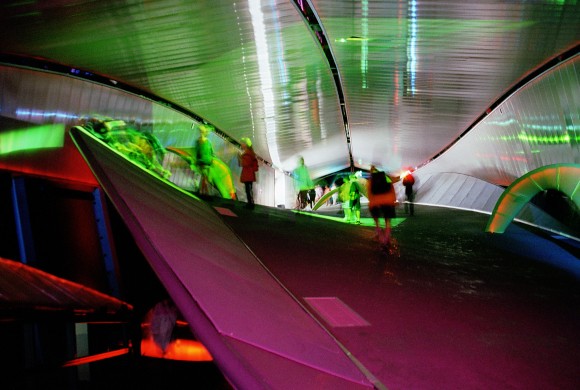
Image by ONL / Saltwater Pavilion by ONL 1997. Design team: Kas Oosterhuis, Menno Rubbens, Ilona Lénárd, Károly Tóth. The water pavilion represents water in all its manifestations. the route through the water pavilion describes a vast loop. It takes the shape of a giant lemniscate, the mathematical symbol for infinity. The lemniscate is visible against the flanks of the body, both on the exterior and on the interior skin. “The Saltwaterpavilion has evolved from the very beginning of the design process as a three-dimensional computer model. We kneaded, stretched, bent, rescaled, morphed, styled and polished. He delineation of the form is laid down in the digital genes of the design that hold the germ of life. The first idea is the genetic starting point for all subsequent steps in the development. We no longer accept the domination of platonic volumes, the simplistic geometry of cube, sphere, cylinder and cone as the basic elements of architecture. That resolution is much too low. Our computers allow us to command millions of coordinates describing far more complex geometries.” ONL.
urbanTick: Time specific terms such as long and short, before and after, quick and slow are constantly used in everyday language and varying contexts. What role do they play in the parametric design/architecture discourse?
Kas Oosterhuis: The same, but better described as strong connections or weak connections. Objects subject to a strong connection move fast, the weaker connected components may move very very slow. Programming the connections literally means expanding the bandwidth of the strength of the connections, and thus of the speed of the objects. With programmable objects connected to sensor networks I can make building that do not move at all, that are completely frozen in their static movement. Conversely I can make environments that are alive and kicking, that change hallucinating fast for the human experience.
urbanTick: Is time money?
Kas Oosterhuis: I would argue that all building components in a parametric system are directly connected to a spreadsheet or database with parameters, most likely numbers. The value of money is one of these thousands of parameters, the ticks of time another represent another parameter, so there is a very loose connection, one of millions of connections. Money is parametrically related to time via the dynamic database
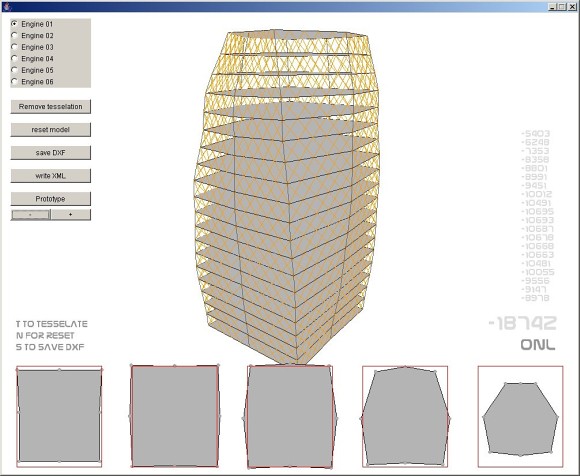
Image by ONL / Al Nasser Group Corporate Headquarters by ONL 2009. Design team Kas Oosterhuis, Ilona Lénárd, Gijs Joosen, Marthijn Pool, Ronald Brandsma, Petr Vokal, Jan Gasparik, Tim McGinley. Although the design constraints were strict ONL has found a strategy which features a combination of an iconic architecture and a functional lay-out. ONL decided to develop a vase shaped tower, narrow at its base, gaining volume in the shaft and tapered towards the top. The vase has been styled by subtly slicing and chamfering the otherwise rectangular floor plan. Relatively modest interventions and parametric modifications of the rectangular basic shape while retaining the structural integrity of the design create the iconic appearance of the Al Nasser Group Headquarters Tower.
urbanTick: In one of the section ‘Versatile Time zones’ in the book TaNKoB you are talking about the resolution of time and propose in a thought experiment a high resolution world time. Rather than then current one hour time steps each place would have its own time based on the location. Would this be the perfect merge of time and space?
Kas Oosterhuis: It basically means not accepting time to be cut in very low-res pieces, and not accepting space to be cut in low-res chunks of matter. Our accepted time zone system is a rude abstraction of time and space, and I have argued that now we have the technology to scale up the resolution and merge time and place as it is, not as an abstraction.
urbanTick: With TaNKoB you are focusing on the programming of the process. What is the sort of time dimension of the architecture your are proposing?
Kas Oosterhuis: Buildings should live much shorter, in able to rethink and evolve technology as embedded in buildings. It would help if we could establish a law that for every new building another one should be taken down or thoroughly updated. Interestingly enough this would be much more sustainable then stretching the life of old, ineffective and often malfunctioning building. IT would give us the clue to improve the overall quality and performance of the built environment.
urbanTick: To what extend does the temporal dimension of architecture play in sync with a wider context, either in the architecture world with trends and interests or in the local cultural scene?
Kas Oosterhuis: Industrial products like clothes, computers, sensors, cars etc have a much shorter life-span, if we would sync with those products buildings would be much more in sync with their time.
urbanTick: You are giving the establishment of the pure digital revolution of building design another 50 years until it is a global standard. Is this a long time or a rather short period?
Kas Oosterhuis: We need sufficient critical mass for evolution to make the jump, like there was critical in the Cambrian period to give rise a vast number of new species, maybe Ray Kurzweil could answer this question based on his theory of the critical point in time [2040] where one single computer has reached the computation power of all human brains together on this earth.
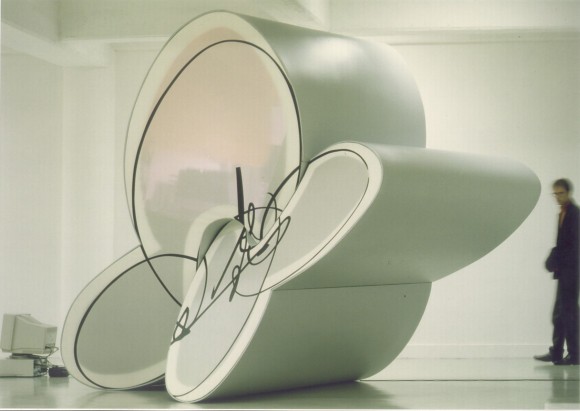
Image by ONL / Sculpture City by ONL 1994. Design team: Kas Oosterhuis, Ilona Lénárd, Menno Rubbens. Can a building be a sculpture? Can a sculpture be a building? Or more precise: can buildings be autonomous sculptures? The functionality of the building is just one out of thousands of parameters effecting the resulting image of the concept. With each step in the series of instructions and acts the functionality of the building is equivalent to other parameters. There is no hierarchy of arguments but their procedure. The electronic skin of Cloud010 is alive. The sculpture buildings of Sculpture City are granting their own functioning. Form allows function in stead of form follows function. Similarly the sculpture buildings are permitting that they are subject to gravity, that they are shaped to a specific form, and that they eventually are materialized.
urbanTick: You are involved in teaching already for many years at different institutions. What role does this play in the emergence of a New Kind of Building, not as the publication but really the type?
Kas Oosterhuis: I have never been surfing fashionable waves that were found and mapped out by others, but rather have spent my time in finding the feet of promising new waves and worked my way up climbing that wave, the top of that wave is not even close but could out of the blue appear without a warning.
urbanTick: How much time do you devote to architecture? Is there time outside architecture?
Kas Oosterhuis: I never feel that I am busy, actually I feel that I have lots of time to relax and think things over, to lecture, to meet people, to write, to do gardening, to travel, to spend holidays in our datsja in Hungary where I am right now.
urbanTick: What is your strongest experience of time?
Kas Oosterhuis: That is when I manage to foresee something unlikely and yet it happens, that feels like changing time.
—-
Oosterhuis, K., 2011. Towards a New Kind of Building: A Designerʼs Guide for Non-standard Architecture, Rotterdam: NAI Publishers.
—-
In an interview series urbanTick is looking closely at meaning and implications of time in everyday life situations. In the form of dialogs different aspects are explored, with the idea to highlight characteristics. The main interest is circling around the construction and implementation of different concepts of time between independent but related areas of activity, such as leisure and work, private and public, reality and virtual. This interview series will not be continuous, but more adhoc, so you might want to use the interview tag to catch up with the previous issues.

